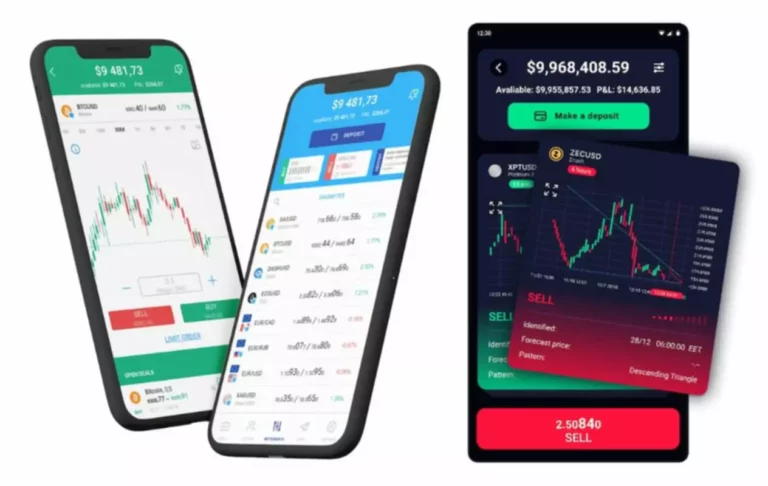Content
Frequent futures traders can bypass a lot of tax paperwork and pay less taxes while keeping more of their earnings by utilizing the 60/40 tax rule. All information on The Forex Geek website is for educational purposes only and is not intended to provide financial advice. Any statements about profits or income, expressed or implied, do not represent a guarantee. Your actual trading may result in losses as no trading system Initial exchange offering is guaranteed. You accept full responsibilities for your actions, trades, profit or loss, and agree to hold The Forex Geek and any authorized distributors of this information harmless in any and all ways.
What are the pros and cons of High-Frequency Trading?
In a traditional market-making setup, a market maker acts as an intermediary, often taking the opposite side of a trade to ensure liquidity. This creates a situation https://www.xcritical.com/ where traders may experience wider spreads, slippage, or slower executions. Filippo specializes in the best Forex brokers for beginners and professionals to help traders find the best trading solutions for their needs.
Alternatives to High-Frequency Trading
Reliant on technology, HFT firms are quite vulnerable to programming glitches, system failures, and cybersecurity threats. An early, infamous case involving Knight Capital, a then-major HFT firm, shows just high frequency forex trading how fast things can go wrong in these firms despite their sophistication. After a software glitch, Knight accidentally bought and sold millions of shares Aug. 1, 2012, in 150 stocks in that day’s first 45 minutes of trading, resulting in a loss of $440 million. Tick trading often aims to recognize the beginnings of large orders being placed in the market. For example, a large order from a pension fund to buy will take place over several hours or even days, and will cause a rise in price due to increased demand.
What Are the Components of a High-Frequency Trading System?

Ticker tape trading, also known as Level 2 market data, a component of this approach, involves monitoring stocks for significant price changes or volume activity. This can include trading on announcements, news, or specific event criteria, with software generating buy or sell orders accordingly. Quote stuffing is a controversial practice often employed by high-frequency traders.
- By bypassing traditional intermediaries such as market makers, ECN trading allows participants to trade directly with each other, ensuring tighter spreads and faster execution times.
- In the US, the SEC looked at ways to monitor HFT firms and make sure their systems did not malfunction.
- By 2010, this had been reduced to milliseconds, and by 2024, one-hundredth of a microsecond is enough time for most HFT trade decisions and executions.
- Another way to enable this kind of speed trading is by using a private fiber network, like the one launched by Spread Networks which connects New York to Chicago.
- Such “spoofing” momentarily creates a false spike in demand/supply, leading to price anomalies, which can be exploited by HFT traders to their advantage.
- High-frequency trading (HFT) has transformed the financial landscape, leveraging powerful computer programs and complex algorithms to execute a large volume of orders within seconds.
To build and monitor the trading infrastructure, the firm will need to hire expert personnel. Technical talents like programmers, network engineers, and systems architects design the architecture. Other key hires include management, compliance, operations, and sales staff. This is why many retail investors tend to avoid venturing into HFT, as the financial requirements can be challenging to sustain over the long term. However, many retail traders claim they can participate in HFT by using EAs, or by learning programming languages and developing an automated trading software. A particular class of HFT strategies relies on ultra-low latency direct market access.
Their trading infrastructure is engineered for speed, determinism, and precision. Strategies are back-tested extensively before live deployment to weed out undesirable behaviors. Firms meticulously monitor system performance and trading results to identify any potential bugs or degraded accuracy. The best HFT algorithms are highly adaptive, monitoring their trading outcomes in real-time and constantly updating their logic to improve profitability. Over time, they learn which signals and strategies work best under different market conditions. This iterative optimization process leads to extremely accurate systems.

Understand factors driving liquidity, volatility, asset correlations, and other dynamics. Familiarise yourself with exchanges, regulations, structures, and instruments. Knowledge of market microstructure is vital to recognize opportunities and avoid pitfalls.
However, critics say it gives firms with the fastest systems an unfair advantage and increases volatility. Flash crashes like the one in 2010 have been partially attributed to HFT. Regulators continue to debate if additional oversight or regulations are needed. However, HFT will likely remain an influential force in stock trading given the competitive advantages it provides firms willing to invest in the infrastructure and technology required. Advanced computerized trading platforms and market gateways are becoming standard tools of most types of traders, including high-frequency traders. Futures trading profits can be classified and are subject to a key tax advantage called the 60/40 tax rule.
On that day, the Dow Jones Industrial Average plunged over 600 points in minutes before rebounding almost as quickly. An SEC investigation found that HFT strategies exacerbated the decline by rapidly pulling liquidity from the market. This highlighted the risks created by the stock market’s growing reliance on high-frequency traders.

Ticker tape trading has evolved from paper ribbons to complex algorithms capitalizing on valuable information faster than humanly possible. Quota stuffing is the practice of a trader entering a high number of buy or sell orders without intending for them to be filled. For instance, a trader might place purchase orders totaling 100,000 shares at prices between $50 and $55 if they have a long position in stock XYZ, which is now trading at $50 per share. This influx of buy orders creates the false appearance of strong buying interest in XYZ.
High-speed traders are the first to find out about price fluctuations, which enables them to take advantage of differences between exchanges. The exchange servers are located on the premises of the stock exchange. In order to get the best and fastest connection possible, trading computers are placed close to the exchange servers. High-frequency trading (HFT) gained prominence with the advent of incentives offered by exchanges to companies that added liquidity to the market. For instance, the New York Stock Exchange (NYSE) introduced Supplemental Liquidity Providers (SLPs) following the liquidity concerns that arose after the collapse of Lehman Brothers in 2008. The NYSE incentivizes companies by providing fees or rebates for adding liquidity, resulting in substantial profits due to the high number of daily transactions.
The price movement between the S&P 500 futures and SPY (an ETF that tracks the S&P 500 index) should move in line with each other. In the case of non-aligned information, it is difficult for high frequency traders to put the right estimate of stock prices. The precision of signals (buy/sell signals) is paramount since gains may quickly turn to losses if signals are not transferred rightly. So, HFT makes sure that every signal is precise enough to trigger trades at such a high level of speed. The information on this web site is not targeted at the general public of any particular country.
Others use more sophisticated analytical models to estimate likely price and volatility impacts. For scheduled events, algorithms monitor flows and positioning for pre-release cues suggesting surprise direction. For equities, related stocks, ADRs, ETFs, indices, and options offer numerous pair trading possibilities. In other assets, corporate and sovereign bond yield spreads present opportunities. Currency, commodity, and volatility relationships are targeted across the globally integrated market.
Ticker tape trading involves algorithms that monitor news and market data to trade on significant events before they are fully priced into securities. News wires, disclosures, economic data, and other sources provide valuable information. The key is detecting and reacting to events faster than human traders using natural language processing and machine learning.

